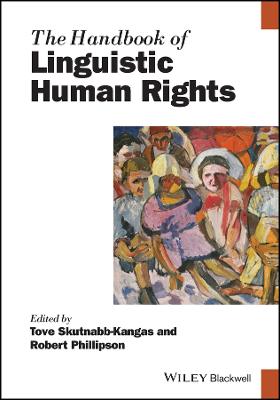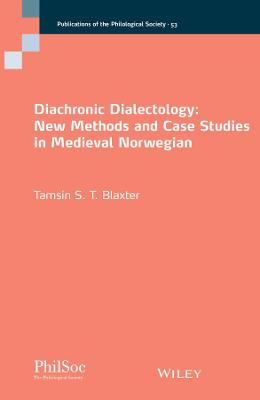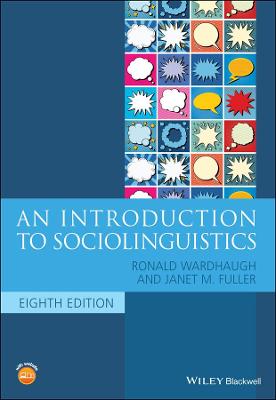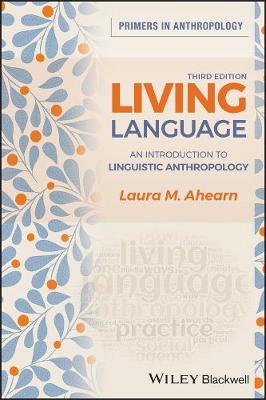Revitalising Language in Provence
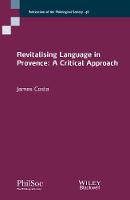 -15%
portes grátis
-15%
portes grátis
Revitalising Language in Provence
A Critical Approach
Costa, James
John Wiley and Sons Ltd
03/2017
208
Mole
Inglês
9781119243533
15 a 20 dias
324
Descrição não disponível.
Acknowledgements
Preface
1. Researching language revitalisation from a critical sociolinguistic perspective
1.1. Saving authentic languages vs. inventing new ones
1.2. Language revitalisation
1.3. Language revitalisation in Academic Work
1.4. Revitalising Occitan in Southern France: Occitania and Provence
1.5. Positioning
1.6. Critical sociolinguistics
1.7. Volume outline
Revitalising
2. Language revitalisation: a genealogy
2.1. Introduction: investigating language revitalisation
2.2. The Precursors: antiquarians and French Revolutionaries
2.3. North American scholarship: anthropology and sociolinguistics
2.4. Descriptive linguistics and language endangerment
2.5. Language revitalisation and linguistics
2.6. Language documentation and description established
3. Defining language revitalisation
3.1. Introduction
3.2. Defi ning revitalisation
3.3. Establishing a discourse of diagnosis and remedy
3.4. Critical approaches to endangerment and revitalisation
3.5. Conclusion
4. Revitalisation as recategorisation
4.1. Introduction
4.2. Rethinking revitalisation as a social movement
4.3. Revitalisation as a conscious effort to implement social change
4.4. Revitalisation and culture change in later debates
4.5. The study of language revitalisation movements
4.5.1. Proposition 1: language revitalisation, as a social movement, is about groupness
4.5.2. Proposition 2: language revitalisation as the consequence of social contact
4.5.3. Proposition 3: language revitalisation is fundamentallya struggle over classifi cations
4.5.4. Language revitalisation is ultimately not about language or even about past linguistic hierarchies
4.6. Conclusion
Conflict in the Occitan South of France
5. Does context stink?
5.1. Introduction
5.2. The Predicament of contextualising: does context stink?
5.3. Language revitalisation in the South of France: who are we talking about?
5.3.1. Experts: legitimising knowledge and revitalisation
5.3.2. Language advocates: disseminating the revitalization narrative
5.3.3. Traditional and new speakers
5.4. Conclusion
6. What the Occitan Language movement is up against: the French Nationalist and Linguistic Project
6.1. Introduction
6.2. Narratives of Frenchness
6.3. Erasing linguistic Otherness in the Sixteenth century
6.4. Patois and the construction of citizenship
6.5. Dialectology and the linguistic making of France
6.6. The French nationalist project and the marginalisation of the South
6.7. Conclusion: a new world ready for language revivals to happen
7. Reviving Occitan
7.1. Introduction
7.2. The first 'Occitan' revivals?
7.3. The contemporary language movement in Southern France: from the Felibrige to the Institut d'Estudis Occitans
7.4. The primacy of place, or the identifi cation of language and territory
7.5. History: imagining the past and calling the future into being
7.6. Conclusion
8. Internal struggles
8.1. Introduction: language revitalisation as a terrain for language ideological debates
8.2. Nineteenth century linguistic ideological debates: who can speak on behalf of the South?
8.2.1. History as a shaping discipline
8.2.2. Early orthographic debates
8.2.3. Representing the South
8.3. Contemporary struggles: Provencal as a language in its own right or as an Occitan dialect
8.3.1. Ideological roots of contemporary linguistic arguments
8.3.2. Diversity and the endangerment discourse of the 1980s and 1990s: setting the old song to a new tune
8.3.3. A rose by any other name would not smell as sweet: the collectif prouvenco, a new player in provencal language politics
8.3.4. Occitan globalisation and the shaming of the Occitan middle class
8.4. Conclusion
Legitimacy
9. Legitimate language and traditional speakers
9.1. Introduction: fi nding the 'traditional speaker'
9.2. 'Language' according to traditional speakers in provence
9.3. Terminological confusion in orange
9.3.1. Categorising speech and language: 'patois' and 'mistralien'
9.3.2. Language and place
9.4. Conclusion
10. Children as ambiguous participants in language revitalisation
10.1. Introduction: the dubious child
10.2. Children as children: tokens of growth and of a future for the community
10.3. Children as pupils
10.4. Bilingual education pupils as 'new speakers'
10.4.1. New speakers and legitimate language on the Provencal linguistic market
10.4.2. New speakers for academics: a descriptive category?
10.4.3. Legitimacy among bilingual school pupils in Provence
10.4.4. Encountering the native speaker: reframing language into old vs. new provencal
10.5. Conclusion
11. Conclusion: wrestling with classifi cations in a world of signs
References
Index
Preface
1. Researching language revitalisation from a critical sociolinguistic perspective
1.1. Saving authentic languages vs. inventing new ones
1.2. Language revitalisation
1.3. Language revitalisation in Academic Work
1.4. Revitalising Occitan in Southern France: Occitania and Provence
1.5. Positioning
1.6. Critical sociolinguistics
1.7. Volume outline
Revitalising
2. Language revitalisation: a genealogy
2.1. Introduction: investigating language revitalisation
2.2. The Precursors: antiquarians and French Revolutionaries
2.3. North American scholarship: anthropology and sociolinguistics
2.4. Descriptive linguistics and language endangerment
2.5. Language revitalisation and linguistics
2.6. Language documentation and description established
3. Defining language revitalisation
3.1. Introduction
3.2. Defi ning revitalisation
3.3. Establishing a discourse of diagnosis and remedy
3.4. Critical approaches to endangerment and revitalisation
3.5. Conclusion
4. Revitalisation as recategorisation
4.1. Introduction
4.2. Rethinking revitalisation as a social movement
4.3. Revitalisation as a conscious effort to implement social change
4.4. Revitalisation and culture change in later debates
4.5. The study of language revitalisation movements
4.5.1. Proposition 1: language revitalisation, as a social movement, is about groupness
4.5.2. Proposition 2: language revitalisation as the consequence of social contact
4.5.3. Proposition 3: language revitalisation is fundamentallya struggle over classifi cations
4.5.4. Language revitalisation is ultimately not about language or even about past linguistic hierarchies
4.6. Conclusion
Conflict in the Occitan South of France
5. Does context stink?
5.1. Introduction
5.2. The Predicament of contextualising: does context stink?
5.3. Language revitalisation in the South of France: who are we talking about?
5.3.1. Experts: legitimising knowledge and revitalisation
5.3.2. Language advocates: disseminating the revitalization narrative
5.3.3. Traditional and new speakers
5.4. Conclusion
6. What the Occitan Language movement is up against: the French Nationalist and Linguistic Project
6.1. Introduction
6.2. Narratives of Frenchness
6.3. Erasing linguistic Otherness in the Sixteenth century
6.4. Patois and the construction of citizenship
6.5. Dialectology and the linguistic making of France
6.6. The French nationalist project and the marginalisation of the South
6.7. Conclusion: a new world ready for language revivals to happen
7. Reviving Occitan
7.1. Introduction
7.2. The first 'Occitan' revivals?
7.3. The contemporary language movement in Southern France: from the Felibrige to the Institut d'Estudis Occitans
7.4. The primacy of place, or the identifi cation of language and territory
7.5. History: imagining the past and calling the future into being
7.6. Conclusion
8. Internal struggles
8.1. Introduction: language revitalisation as a terrain for language ideological debates
8.2. Nineteenth century linguistic ideological debates: who can speak on behalf of the South?
8.2.1. History as a shaping discipline
8.2.2. Early orthographic debates
8.2.3. Representing the South
8.3. Contemporary struggles: Provencal as a language in its own right or as an Occitan dialect
8.3.1. Ideological roots of contemporary linguistic arguments
8.3.2. Diversity and the endangerment discourse of the 1980s and 1990s: setting the old song to a new tune
8.3.3. A rose by any other name would not smell as sweet: the collectif prouvenco, a new player in provencal language politics
8.3.4. Occitan globalisation and the shaming of the Occitan middle class
8.4. Conclusion
Legitimacy
9. Legitimate language and traditional speakers
9.1. Introduction: fi nding the 'traditional speaker'
9.2. 'Language' according to traditional speakers in provence
9.3. Terminological confusion in orange
9.3.1. Categorising speech and language: 'patois' and 'mistralien'
9.3.2. Language and place
9.4. Conclusion
10. Children as ambiguous participants in language revitalisation
10.1. Introduction: the dubious child
10.2. Children as children: tokens of growth and of a future for the community
10.3. Children as pupils
10.4. Bilingual education pupils as 'new speakers'
10.4.1. New speakers and legitimate language on the Provencal linguistic market
10.4.2. New speakers for academics: a descriptive category?
10.4.3. Legitimacy among bilingual school pupils in Provence
10.4.4. Encountering the native speaker: reframing language into old vs. new provencal
10.5. Conclusion
11. Conclusion: wrestling with classifi cations in a world of signs
References
Index
Este título pertence ao(s) assunto(s) indicados(s). Para ver outros títulos clique no assunto desejado.
Language revitalisation, language survival, sociolinguistics, linguistics, languages, lost languages, preserving languages
Acknowledgements
Preface
1. Researching language revitalisation from a critical sociolinguistic perspective
1.1. Saving authentic languages vs. inventing new ones
1.2. Language revitalisation
1.3. Language revitalisation in Academic Work
1.4. Revitalising Occitan in Southern France: Occitania and Provence
1.5. Positioning
1.6. Critical sociolinguistics
1.7. Volume outline
Revitalising
2. Language revitalisation: a genealogy
2.1. Introduction: investigating language revitalisation
2.2. The Precursors: antiquarians and French Revolutionaries
2.3. North American scholarship: anthropology and sociolinguistics
2.4. Descriptive linguistics and language endangerment
2.5. Language revitalisation and linguistics
2.6. Language documentation and description established
3. Defining language revitalisation
3.1. Introduction
3.2. Defi ning revitalisation
3.3. Establishing a discourse of diagnosis and remedy
3.4. Critical approaches to endangerment and revitalisation
3.5. Conclusion
4. Revitalisation as recategorisation
4.1. Introduction
4.2. Rethinking revitalisation as a social movement
4.3. Revitalisation as a conscious effort to implement social change
4.4. Revitalisation and culture change in later debates
4.5. The study of language revitalisation movements
4.5.1. Proposition 1: language revitalisation, as a social movement, is about groupness
4.5.2. Proposition 2: language revitalisation as the consequence of social contact
4.5.3. Proposition 3: language revitalisation is fundamentallya struggle over classifi cations
4.5.4. Language revitalisation is ultimately not about language or even about past linguistic hierarchies
4.6. Conclusion
Conflict in the Occitan South of France
5. Does context stink?
5.1. Introduction
5.2. The Predicament of contextualising: does context stink?
5.3. Language revitalisation in the South of France: who are we talking about?
5.3.1. Experts: legitimising knowledge and revitalisation
5.3.2. Language advocates: disseminating the revitalization narrative
5.3.3. Traditional and new speakers
5.4. Conclusion
6. What the Occitan Language movement is up against: the French Nationalist and Linguistic Project
6.1. Introduction
6.2. Narratives of Frenchness
6.3. Erasing linguistic Otherness in the Sixteenth century
6.4. Patois and the construction of citizenship
6.5. Dialectology and the linguistic making of France
6.6. The French nationalist project and the marginalisation of the South
6.7. Conclusion: a new world ready for language revivals to happen
7. Reviving Occitan
7.1. Introduction
7.2. The first 'Occitan' revivals?
7.3. The contemporary language movement in Southern France: from the Felibrige to the Institut d'Estudis Occitans
7.4. The primacy of place, or the identifi cation of language and territory
7.5. History: imagining the past and calling the future into being
7.6. Conclusion
8. Internal struggles
8.1. Introduction: language revitalisation as a terrain for language ideological debates
8.2. Nineteenth century linguistic ideological debates: who can speak on behalf of the South?
8.2.1. History as a shaping discipline
8.2.2. Early orthographic debates
8.2.3. Representing the South
8.3. Contemporary struggles: Provencal as a language in its own right or as an Occitan dialect
8.3.1. Ideological roots of contemporary linguistic arguments
8.3.2. Diversity and the endangerment discourse of the 1980s and 1990s: setting the old song to a new tune
8.3.3. A rose by any other name would not smell as sweet: the collectif prouvenco, a new player in provencal language politics
8.3.4. Occitan globalisation and the shaming of the Occitan middle class
8.4. Conclusion
Legitimacy
9. Legitimate language and traditional speakers
9.1. Introduction: fi nding the 'traditional speaker'
9.2. 'Language' according to traditional speakers in provence
9.3. Terminological confusion in orange
9.3.1. Categorising speech and language: 'patois' and 'mistralien'
9.3.2. Language and place
9.4. Conclusion
10. Children as ambiguous participants in language revitalisation
10.1. Introduction: the dubious child
10.2. Children as children: tokens of growth and of a future for the community
10.3. Children as pupils
10.4. Bilingual education pupils as 'new speakers'
10.4.1. New speakers and legitimate language on the Provencal linguistic market
10.4.2. New speakers for academics: a descriptive category?
10.4.3. Legitimacy among bilingual school pupils in Provence
10.4.4. Encountering the native speaker: reframing language into old vs. new provencal
10.5. Conclusion
11. Conclusion: wrestling with classifi cations in a world of signs
References
Index
Preface
1. Researching language revitalisation from a critical sociolinguistic perspective
1.1. Saving authentic languages vs. inventing new ones
1.2. Language revitalisation
1.3. Language revitalisation in Academic Work
1.4. Revitalising Occitan in Southern France: Occitania and Provence
1.5. Positioning
1.6. Critical sociolinguistics
1.7. Volume outline
Revitalising
2. Language revitalisation: a genealogy
2.1. Introduction: investigating language revitalisation
2.2. The Precursors: antiquarians and French Revolutionaries
2.3. North American scholarship: anthropology and sociolinguistics
2.4. Descriptive linguistics and language endangerment
2.5. Language revitalisation and linguistics
2.6. Language documentation and description established
3. Defining language revitalisation
3.1. Introduction
3.2. Defi ning revitalisation
3.3. Establishing a discourse of diagnosis and remedy
3.4. Critical approaches to endangerment and revitalisation
3.5. Conclusion
4. Revitalisation as recategorisation
4.1. Introduction
4.2. Rethinking revitalisation as a social movement
4.3. Revitalisation as a conscious effort to implement social change
4.4. Revitalisation and culture change in later debates
4.5. The study of language revitalisation movements
4.5.1. Proposition 1: language revitalisation, as a social movement, is about groupness
4.5.2. Proposition 2: language revitalisation as the consequence of social contact
4.5.3. Proposition 3: language revitalisation is fundamentallya struggle over classifi cations
4.5.4. Language revitalisation is ultimately not about language or even about past linguistic hierarchies
4.6. Conclusion
Conflict in the Occitan South of France
5. Does context stink?
5.1. Introduction
5.2. The Predicament of contextualising: does context stink?
5.3. Language revitalisation in the South of France: who are we talking about?
5.3.1. Experts: legitimising knowledge and revitalisation
5.3.2. Language advocates: disseminating the revitalization narrative
5.3.3. Traditional and new speakers
5.4. Conclusion
6. What the Occitan Language movement is up against: the French Nationalist and Linguistic Project
6.1. Introduction
6.2. Narratives of Frenchness
6.3. Erasing linguistic Otherness in the Sixteenth century
6.4. Patois and the construction of citizenship
6.5. Dialectology and the linguistic making of France
6.6. The French nationalist project and the marginalisation of the South
6.7. Conclusion: a new world ready for language revivals to happen
7. Reviving Occitan
7.1. Introduction
7.2. The first 'Occitan' revivals?
7.3. The contemporary language movement in Southern France: from the Felibrige to the Institut d'Estudis Occitans
7.4. The primacy of place, or the identifi cation of language and territory
7.5. History: imagining the past and calling the future into being
7.6. Conclusion
8. Internal struggles
8.1. Introduction: language revitalisation as a terrain for language ideological debates
8.2. Nineteenth century linguistic ideological debates: who can speak on behalf of the South?
8.2.1. History as a shaping discipline
8.2.2. Early orthographic debates
8.2.3. Representing the South
8.3. Contemporary struggles: Provencal as a language in its own right or as an Occitan dialect
8.3.1. Ideological roots of contemporary linguistic arguments
8.3.2. Diversity and the endangerment discourse of the 1980s and 1990s: setting the old song to a new tune
8.3.3. A rose by any other name would not smell as sweet: the collectif prouvenco, a new player in provencal language politics
8.3.4. Occitan globalisation and the shaming of the Occitan middle class
8.4. Conclusion
Legitimacy
9. Legitimate language and traditional speakers
9.1. Introduction: fi nding the 'traditional speaker'
9.2. 'Language' according to traditional speakers in provence
9.3. Terminological confusion in orange
9.3.1. Categorising speech and language: 'patois' and 'mistralien'
9.3.2. Language and place
9.4. Conclusion
10. Children as ambiguous participants in language revitalisation
10.1. Introduction: the dubious child
10.2. Children as children: tokens of growth and of a future for the community
10.3. Children as pupils
10.4. Bilingual education pupils as 'new speakers'
10.4.1. New speakers and legitimate language on the Provencal linguistic market
10.4.2. New speakers for academics: a descriptive category?
10.4.3. Legitimacy among bilingual school pupils in Provence
10.4.4. Encountering the native speaker: reframing language into old vs. new provencal
10.5. Conclusion
11. Conclusion: wrestling with classifi cations in a world of signs
References
Index
Este título pertence ao(s) assunto(s) indicados(s). Para ver outros títulos clique no assunto desejado.

